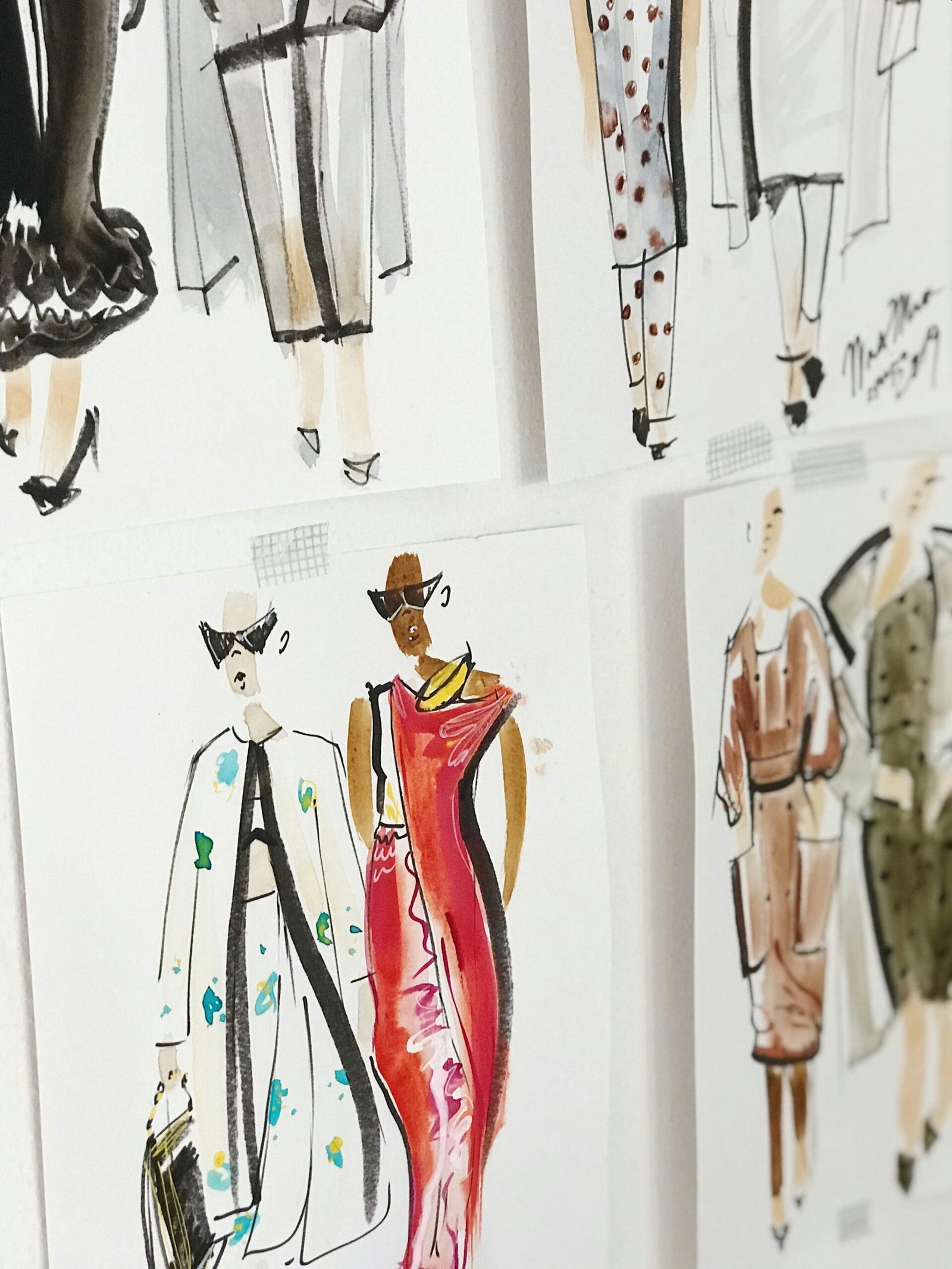Historical Influences on Fashion
The trajectory of fashion has been profoundly affected by myriad historical events and cultural shifts that reflect the complexities of human society. From ancient civilizations where clothing served not only functional purposes but also symbolized social status, to contemporary styles that emphasize individual expression, the evolution of fashion encapsulates the story of humanity itself. In ancient Rome, for instance, the toga signified citizenship and status, while in medieval Europe, garments were heavily influenced by class distinctions and local resources. Such historical contexts laid the groundwork for future developments in fashion.
The Industrial Revolution in the late 18th and early 19th centuries marked a pivotal moment in fashion history, introducing mechanization in textile production. This period revolutionized how clothing was made, making fashionable attire more accessible to the burgeoning middle class. As mass production emerged, the exclusivity of haute couture began to wane, leading to a democratization of fashion. It was during this time that the foundation of the modern fashion industry was established, as designers began to cater to a wider audience, paving the way for seasonal collections and the fashion calendar we recognize today.
Another significant influence was the fashion revolution of the 1960s, characterized by radical changes in societal norms and personal identity. This period highlighted the youth culture, with a bold embrace of vibrant colors and unconventional silhouettes. Icons such as Twiggy and the Beatles inspired millions to adopt new styles. The rise of boutique fashion houses reflected a shift towards individuality, encouraging consumers to express themselves distinctively through their sartorial choices. These decades have illustrated a profound relationship between historical movements and fashion trends, which continue to evolve, mirroring the values and aspirations of society as it progresses.
The Role of Technology in Modern Fashion
The fashion industry has undergone a significant transformation due to technological advancements, radically changing the way clothing and accessories are designed, produced, marketed, and consumed. One of the most notable developments is the introduction of digital design tools that enable designers to create intricate patterns and garments with precision and efficiency. These tools not only streamline the design process but also allow for rapid prototyping and iteration, fostering creativity and innovation within the fashion domain.
Moreover, 3D printing has revolutionized the manufacturing process. Designers can now produce unique pieces that were once impossible to create using traditional methods. This technology reduces waste and allows for on-demand production, which aligns with the growing emphasis on sustainability in fashion. As consumers become more environmentally conscious, the ability to create customizable and sustainable fashion solutions has become a priority for many brands.
The impact of social media cannot be overstated in its relationship with modern fashion. Platforms such as Instagram and TikTok have become powerful marketing tools for designers and brands, facilitating real-time feedback and engagement with consumers. Social media influencers significantly shape trends and drive consumer behavior, making them essential partners in fashion marketing strategies. This shift has also allowed lesser-known designers to gain visibility and establish their brands without the backing of major fashion houses.
The rise of e-commerce further highlights the changes in fashion landscape. Online shopping offers convenience and accessibility to a broader audience, challenging traditional retail practices. As consumers increasingly turn to the web for their fashion needs, brick-and-mortar stores must adapt and innovate to remain relevant. The new trends include virtual fashion shows and the integration of artificial intelligence for fashion forecasting, which are paving the way for a more dynamic and responsive industry. As technological solutions continue to evolve, the fashion industry will undoubtedly embrace these changes, shaping its future direction.
Sustainability and Ethical Fashion Trends
The fashion industry has been undergoing a significant transformation in recent years, driven largely by an increased consumer demand for sustainability and ethical practices. As awareness grows regarding the environmental and social impacts of garment production, many fashion brands are shifting their business models to embrace eco-friendly materials and responsible sourcing. This movement has ushered in a new era of sustainable fashion, wherein the traditional fast fashion paradigm is being challenged.
Slow fashion, a notable trend arising from this shift, emphasizes quality over quantity. It advocates for the production of clothing that is durable, timeless, and made from sustainable materials. This approach not only benefits the environment by reducing waste but also encourages consumers to invest in fewer, high-quality items that remain stylish for longer periods. Consequently, the industry is witnessing an emergence of brands that prioritize craftsmanship and ethical labor practices, enabling shoppers to make informed choices that align with their values.
Transparency in sourcing and labor practices has also become paramount. Consumers are increasingly seeking out brands that provide clear information about their supply chains and production methods. This desire for accountability has led to the rise of initiatives and certifications aimed at promoting ethical fashion. Brands like Patagonia and Reformation serve as case studies, demonstrating how a commitment to sustainability can drive consumer loyalty and contribute positively to the environment and society.
It is essential to recognize the detrimental effects of fast fashion, which relies on high volumes of low-cost production often at the expense of workers’ rights and environmental health. The backlash against such practices has intensified the push towards a more sustainable and ethical fashion landscape. By embracing these new trends, both consumers and brands can play a crucial role in reshaping the future of the industry.
Future Trends in Fashion: What’s Next?
As we look ahead, the fashion industry is poised for transformative developments driven by a confluence of societal shifts, technological advances, and evolving consumer expectations. One notable trend is the increased emphasis on inclusivity, which encompasses not only a broader range of sizes but also the representation of diverse body types, ethnicities, and genders within fashion narratives. Brands are beginning to recognize the necessity of catering to a varied clientele, moving away from traditional, narrow definitions of beauty to embrace a more holistic representation of society.
The impact of global cultures on Western fashion should also not be underestimated. As the world becomes more interconnected, fashion designs are increasingly inspired by traditional garments and practices from various cultures. This fusion can lead to innovative styles that celebrate heritage while fostering mutual respect among different communities. In addition, designers are likely to face growing scrutiny regarding cultural appropriation, making it essential for brands to approach cross-cultural influences with sensitivity and authenticity.
Technological integration in fashion is another avenue that holds significant promise for the future. Innovations in materials, such as sustainable fabrics and smart textiles, are paving the way for fashion that is not only stylish but also environmentally conscious. Wearable technology is set to evolve, enhancing user experience by merging functionality with fashion aesthetics. This may include advancements in smartwatches, fitness gear, and even apparel that can optimize performance through data analytics.
Moreover, the role of consumer activism in shaping fashion’s trajectory cannot be understated. With consumers increasingly demanding transparency about sustainability practices and ethical sourcing, brands face mounting pressure to adapt their operations accordingly. The next decade may witness a pivotal shift as businesses that prioritize ethical considerations will likely resonate more with an informed audience that values integrity over mere trends.






Leave a Reply